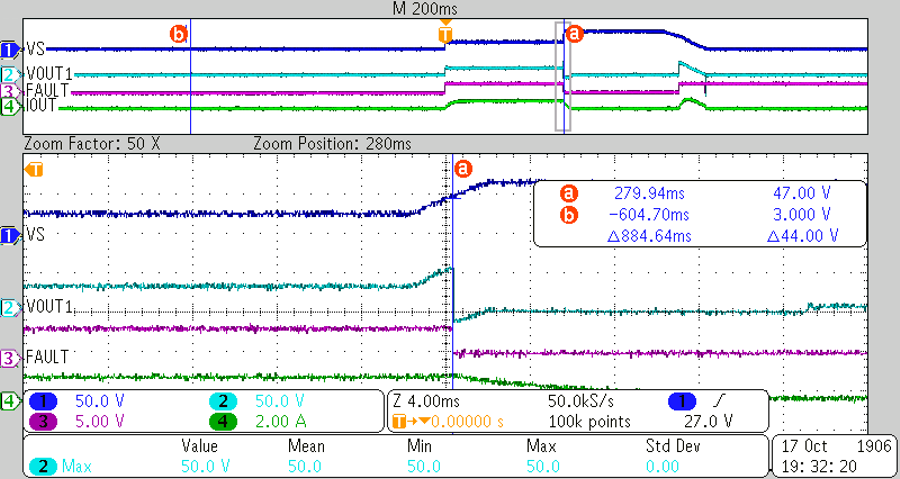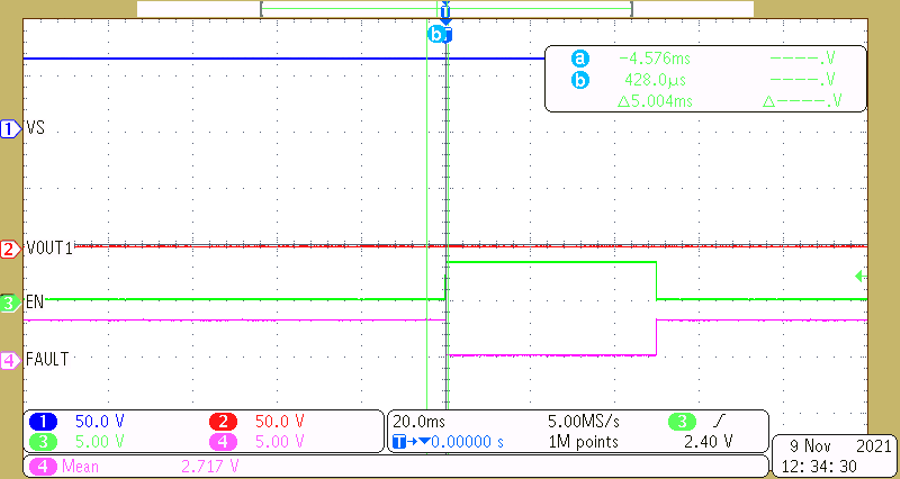SLVAFC0 February 2022 TPS272C45
3 60-V Tolerance Test
For SELV systems, the high-side switch can survive and protect itself with a bus voltage up to 60 V in both the ON and OFF states. These two states are tested and examined in the following examples.
The first scenario is when the device is in the ON state and the bus voltage ramps from nominal 24 V to 60 V. In this situation, the over-voltage protection of TPS272C45C will be triggered with the self-protection and fault indication verified in Figure 3-1. As the supply voltage VS is ramping from 24 V to 60 V at 10 V/ms, the FAULT signal is triggered and the FET is shut off automatically below 50 V.
 Figure 3-1 Over-Voltage Protection During ON State with Supply Ramping
Figure 3-1 Over-Voltage Protection During ON State with Supply RampingThe second scenario is with 60 V on the input and the device transitioning from OFF to ON state. The FET should remain off in this situation, and the device should not be damaged. Figure 3-2 verifies the operation where the device receives an ON signal while the bus voltage is 60 V. The FAULT signal is triggered when the EN signal goes high while the output of the FET remains off during the entire transient event.
 Figure 3-2 Over-Voltage Protection with the Switch Toggling at 60 V
Figure 3-2 Over-Voltage Protection with the Switch Toggling at 60 V